Cosmopolitanism(s) Interrupted
Horta, Paulo Lemos and Robbins, Bruce. eds. 2017. Cosmopolitanisms. New York: New York University Press.
reviewed by Sandra Ponzanesi
This edited volume reignites many of the incessant debates on cosmopolitanism, its origin, development, and raison d’être, not only from difference disciplinary traditions and “world views” but also from different points in time. The volume is a revisitation of cosmopolitanism, offering a new take on many of the ongoing debates and querelles, while also making headway by reorienting the field of cosmopolitan studies as such. The vibrancy of the field is shown by the list of influential critics in this volume, who do not take the notion of cosmopolitanism for granted but engage with it from positions that are both critical and creative. These engagements show how the notion or the ideal of cosmopolitanism is far from being obsolete but on the contrary demands, now more than ever, a deep critical engagement. While critics continue to retain the assumption that cosmopolitanism’s appeal lies in its universal principles, there is a sense that “The Times They Are A-Changin’” as Bob Dylan would put it[1], and therefore new realities call for new paradigms. The accelerated process of globalization has allowed many of cosmopolitanism’s aspirations to come true (increased international mobility of people and markets, waning borders, and an increase in supranational institutions). Yet the total deregulation and decentralization brought about by globalization and the associated backlash bring the very principles of cosmopolitanism into disarray by challenging the very notion of commonality and shared values, with a resurgence of new, localized identities, nationalism, and ethnic strife. Therefore, even though the world is becoming increasingly interconnected and shaped by global forces, this does not mean that the world has become more cosmopolitan. On the contrary, the challenge of cosmopolitanism remains as prominent as ever, because as Spivak has phrased it in other contexts, cosmopolitanism is “what one cannot not want” (Spivak 1999: 110). To dispense with cosmopolitanism would mean to relinquish our ideal of a common humanity and with it the principle of human rights and an ethical responsibility to fellow citizens. Cosmopolitanism, as a notion, has accompanied Western civilization from the very beginning. Yet the term and its meaning have shifted and been transformed through time and context, showing a resilience unmatched by other intellectual paradigms. From the Stoics to cosmopolitanism in the age of the Anthropocene and cyberspace, the term has evolved, retaining a flexibility as well as a foundational necessity to continue to exist.
It was with Kant’s Toward Perpetual Peace (1999 [1795]) that it reached its most authoritative moment, with the birth of modern nation-states and the moral dilemma of keeping peace, in part to promote effective transnational trade. Cosmopolitanism became a comrade in arms of capitalism, and the many paradoxes of its affirmation constituted by colonialism, imperialism, and slavery, where the mobility of the elites went hand in hand with the forced uprooting and exploitation of others. Cosmopolitanism has, moreover, often been linked only to the mobility of the elites and privileged, who, through education or financial means, were able to cross borders, languages, and political systems. Kant’s moral ideal of cosmopolitanism was a given for the happy few. The idea of the Grand Tour and Sentimental Journey was not open to lower-class and uneducated people. With the decline of the aristocracy and the rise of the enterprising bourgeoisie in the wake of industrialization, the notion of cosmopolitanism underwent a shift, becoming more embroiled with new technologies of communication (the telegraph, fax, and phone) and faster and more accessible forms of transportation (trains, cars, planes). This more emancipatory cosmopolitanism started to emerge as an intrinsic aspect of modernity, a modernity that hardly had room for vernacular forms and alternative ideas of culture Appadurai, 1996). In the light of these many transitions, this volume proposes a provocation by courting cosmopolitanisms in the plural rather than offering a single notion of cosmopolitanism. To speak of multiple cosmopolitanisms could seem like a contradiction in terms. But is it really? Cosmopolitanism as a way of thinking, feeling, and acting beyond one’s own particular community has been seen as a universalism of a Western particular. In their introduction to the special issue on “Cosmopolitanism” that appeared in Public Culture in 2000, the guest editors—Carol A. Breckenridge, Dipesh Chakrabarty, Homi K. Bhabha, and Sheldon Pollock—focus on the critique of cosmopolitanism’s Eurocentric bias, debating how most cosmopolitan formations are interconnected with forms of coercion or inequality, such as slavery, colonization, and imperialism. So for them the question is whether it is possible to have a cosmopolitanism, with its promise of universal knowledge, that also foregrounds a noncoercive and egalitarian politics. They open with a disorienting idea of what “cosmopolitanism” is or might be, precluding any normative fixing:
“For one thing, cosmopolitanism is not some known entity existing in the world, with a clear genealogy from the Stoics to Immanuel Kant, that simply awaits more detailed description at the hands of scholarship. We are not exactly certain what it is, and figuring out why this is so and what cosmopolitanism may be raises difficult conceptual issues. As a practice, too, cosmopolitanism is yet to come, something awaiting realization.” (Breckenridge et al. 2000: 577)
After that open-ended consideration, the guest editors nevertheless circle around a possible misapprehension about the use and abuse of the term: “Cosmopolitans today are often the victims of modernity, failed by capitalism’s upward mobility, and bereft of those comforts and customs of national belonging. Refugees, peoples of the diaspora, and migrants and exiles represent the spirit of the cosmopolitical community.” (Breckenridge et al. 2000: 582) The guest editors of Public Culture thus move skillfully to the use of cosmopolitanisms in the plural by subscribing to the “other” forms of cosmopolitanisms that have remained in the shadow or have been cast as “unauthorized forms of cosmopolitanism.” These refer to manifestations of cosmopolitanism among people at the margin of histories who are part of minoritarian constellations, although they might not be so minoritarian in terms of numbers:
“…cosmopolitanism must give way to the plurality of modes and histories—not necessarily shared in degree or in concept regionally, nationally, or internationally—that comprise cosmopolitan practice and history. We propose therefore that cosmopolitanism be considered in the plural, as cosmopolitanisms” (Breckenridge et al. 2000: 577).
It is an invitation to look at cosmopolitanism beyond the binarism of the local versus global, but also to look for cosmopolitanism outside the dominant schemata, from the Stoics to Kant, that would limit the way we look at and understand what cosmopolitanism can be about. By embracing a look at cultures across space and time, and how they engage with feeling and acting beyond the nation, a new array of possibilities might emerge that are not prefabricated or constrained by Western paradigms. That is also how Paul Gilroy’s notion of conviviality emerged, inspired by Spain’s multicultural Moorish culture of coexistence and cohabitation (convivencia) (Gilroy 2004), steering away from multiculturalism without abandoning the aspiration of cosmopolitanism. The guest editors of Public Culture conclude that we should first radically rewrite the history of cosmopolitanism and redraw its map by thinking “outside the box of European intellectual history” (Breckenridge et al. 2000: 586), and secondly rethink the range of practices that might allow for new and alternative theorizations.
The volume edited by Bruce Robbins and Paulo Lemos Horta rises to this challenge by embracing cosmopolitanisms in the plural, not as a fashionable label but as the fruit of decades-long engagement with the field. Bruce Robbins has written extensively on cosmopolitanism from different entry points, taking stock of the idea of cosmopolitanism in deep time too, therefore venturing outside the paradigm of European history (2016); his latest book The Beneficiary deals with cosmopolitanism from the viewpoint of inequality and is a sequel to Perpetual War: Cosmopolitanism from the Viewpoint of Violence (2012). His previously co-edited volume Cosmopolitics. Thinking and Feeling Beyond the Nation (Robbins and Cheah 1998) makes a point in not wanting to disentangle the culturalist approaches to cosmopolitanism from its political relevance, and claims the resurgence of cosmopolitanism as a viable alternative political project. Besides the double introduction by the editors themselves, with Robbins responsible for Part I on “Actually Existing Cosmopolitanism” and Pheng Cheah producing Part II on “The Cosmopolitical-Today,” Cosmopolitics contains contributions that are still cutting-edge today. This includes the two full-length chapters by Robbins and Cheah themselves and chapters by contributors such as Gayatri Spivak, Benedict Anderson, Etienne Balibar, James Clifford, and Anthony Appiah, who also wrote the afterword for the later Cosmopolitanisms.
In his own chapter “Comparative Cosmopolitanisms” (already used in the plural in 1998 before the special issue of Public Culture), Robbins brings forward the institutional entanglements and explores the possibility of “comparative cosmopolitanisms” that seek to reconcile a self-conscious academic professionalism with a worldly and political engagement. The book emerged at the height of the debate about multiculturalism as merely particularistic and investing in cosmopolitanism as striving towards mutual common ground, extending political practice beyond national borders and including non-citizens as equally valid members of the cosmopolitan polity. Robbins is aware of the risks of cosmopolitanism in restricting the space of others, especially in the case of what are termed diasporic actions that impact on local politics, and of the dangers of falling outside the security of nation-state regulation. Yet he does not give up on the possibilities that international alliances can offer or the potential of actually existing cosmopolitanisms. This is in light of what he phrased as the existence of inevitable paradoxes and contradictions within the field, which nonetheless has not exhausted its purpose. As Robbins writes:
“If we agree that there is ‘no easy generalization,’ don’t we want to retain the right to difficult generalization?” (Robbins 1998: 251)
The question remains whether in the attempt to safeguard cosmopolitanism, other insurrections that traditionally may not fall under the aegis of cosmopolitanism, such as transnationalism, diasporic formations, and postcolonial alliances, might be overlooked or unwillingly appropriated by cosmopolitanism’s historically and theoretically dominant discourse. Yet, it is in the acknowledging of these new intersections between cosmopolitanism and the above mentioned insurrections that Robbins charts the ‘difficult generalization.’
Paul Lemos Horta is a scholar of world literature and has worked at length on cultural productions beyond their point of origin, including the cross-cultural collaborations that influenced The Thousand and One Nights and its reception. In his book, Marvellous Thieves: Secret Authors of the Arabian Nights (2017) Horta reports on a number of conversations between Europeans documenting the tales and their interlocutors. In this volume, Horta offers a very fine reading of Richard Burton, the British explorer, as a cosmopolitan or counter-cosmopolitan in the light of Anthony Appiah’s engagement with the explorer and translator. In Appiah’s eyes, Burton is a cosmopolitan who seeks to engage with difference but he is also a counter-cosmopolitan because he cannot escape the prejudices of his British upbringing. Horta remarks at the end that it might be wrong to attribute Burton’s cosmopolitanism only to his exposure to other cultures and attribute his counter-cosmopolitanism only to his inescapable Englishness. Rather, Horta suggests, we should take Burton’s counter-cosmopolitan biases as part of his self-fashioning as a cosmopolitan. Aware of the long genealogy of the term, Horta and Robbins prefer to engage in their volume with the “new cosmopolitanism” that emerged after the 1990s. As Pnina Werbner notes, the theories of cosmopolitanism after the 1990s, including those by Breckenridge et al. and Cheah and Robbins, have sought to go beyond an interpretation of cosmopolitanism as only universal, open, and above all “Western” in order to include local, rooted, and historically and geographically situated dimensions, “vernacular cosmopolitanism,” and local, cultural, and rooted proximities, foregrounding the role of urban space and connectivity of both difference and diversity, and the role of diasporic groups in leading to a rethinking of the universalism of cosmopolitanism. This implies also inserting a new definition of cosmopolitanism from below by incorporating a more “metaphoric designation” that includes various groups of migrants: “expatriates, expellees, political refugees, alien residents, immigrants, and ethnic and racial minorities tout court” (Safran 1991: 83). Certain geopolitical transformations, such as mass migration, and waves of refugees and asylum seekers—a consequence of the colonial expansion—and the post-Socialist reconfiguration of nation-states, meant that the study of diasporas and cosmopolitan identities had to take into consideration both historical and cultural specificities. These configurations mark the move towards “a nomadic turn in which the very parameters of specific historical moments are embodied and … are scattered and regrouped in new points of becoming” (Evans-Braziel and Mannur 2008: 3). This volume joins and enriches an existing debate from which new, provincialized conceptualizations of cosmopolitanism have emerged, such as “critical cosmopolitanism” (Rabinow 1986), “postcolonial cosmopolitanism” (Parry 1991), “rooted cosmopolitanism” (Cohen 1992; Ackerman 1994), “nomadic subjects” (Braidotti 1994), “discrepant cosmopolitanism” (Clifford 1992), “vernacular cosmopolitanism” (Bhabha 1996; Beckenbridge et all, 2000; Werbner 2006; Gunew 2012), “patriotic cosmopolitanism” (Appiah 1998), “border cosmopolitanism” (Mignolo 2000), “planetary cosmopolitanism” (Spivak 1999; Gilroy 2004), “banal cosmopolitanism” (Beck 2002), “subaltern cosmopolitanism” and “cosmopolitan legality” (De Sousa Santos and Rodríguez-Garavito 2005), “indigenous cosmopolitanism” (Goodale 2006; Forte 2010), “emancipatory cosmopolitanism” (Pieterse 2006), “ordinary cosmopolitanism” (Kendall, Woodward, and Skrbis 2007), “postcolonial cosmopolitanism” (Bhambra 2011; Baban 2016), “Cosmopolitan Europe” (Hall 2003; Pichler 2009; Ponzanesi 2018), “libidinal cosmopolitanism” (Boston 2016), and “accidental cosmopolitanism’ (Titley 2005).
Is the multiplication into various inflections of “cosmopolitanism” (Horta and Robbins 2017) not an undermining of the very notion of cosmopolitanism itself and an attempt to save the concept from its Eurocentric origin? For the editors, the triumph of the descriptive plural over the normative singular opens up as many questions as it answers (Horta and Robbins 2017: 1). The plural is a celebration of the particulars, but also a way out of the positive/negative, center/periphery, normative/descriptive binarism. It is not simply the celebration of a cosmopolitanism from below, but the awareness that we are now capable of perceiving emotional attachment to distant others in ways that were not possible in the past. The editors mention Luc Boltanski in their introduction, referring to a new idea of common humanity, which makes distant suffering, or the attachment to distant people, possible through new features of modern humanitarianism. According to Lilie Chouliaraki, whose work has elaborated on Boltanski with reference to media and spectatorship, “the representation of proximity/distance to the scene of suffering” is therefore part of “the analytics of mediation” or The Spectatorship of Suffering—as one of her books is titled (2006: 8). The reading of Chouliaraki is relevant to the shift in notions of cosmopolitanism theorized in the 1990s and more recently as it implies significant changes in the structure of feeling and thinking beyond the nation as allowed by new technologies and digital media culture. This new form of universalism is very much defined by and through mediated encounters between different places and “worlds”. Chouliaraki rightly states that “the question of solidarity (…) cannot be examined separately from the communicative structure that has made this discourse available to us in the first place” (2013: 15). It is through these encounters with mediated suffering that we share a sense of common humanity (as proposed in Boltanski 1999 and Sontag 2003). Through empathy with unfortunate others, we can also scrutinize how these cosmopolitan imaginaries are circulated. The rise of digital technology and social media complements more traditional forms of communication, leading to enhanced possibilities to forge bonds of solidarity between different worlds (including through fundraising and humanitarian campaigns).
Chouliariaki’s The Ironic Spectator: Solidarity in an Age of Post-Humanitarianism (2013) builds on her previous work on the mediatization of distant suffering, and states that forms of solidarity have changed substantially in recent decades in tandem with the shifts in media, technology, markets, and politics. Solidarity, she states, is not based on pity with distant Others any more (as Boltanski had argued), rather it is based on self-fulfillment, a self-oriented morality that centers around doing good to Others based upon “how I feel” (2-3). As Christensen and Jansson write, the moral and post-humanitarian subject of cosmopolitanism emerges as a narcissistic agent that is self-benefitting, and acts in order to just fulfil their own self-gratifying vision rather than acting and engaging politically (Christensen and Jansson 2015: 4) Though this volume does not engage with media perspectives on cosmopolitanism, there is an engagement with cosmopolitanism as an unfinished business that remains, as Robert Young writes in his contribution to this volume, between national sovereignty and cosmopolitanism. “Can the nation-state […] stretch itself to protect the mobile, migratory, multiply-loyal subjects that nationalism has excluded but that are now so characteristic of our time? It is only in such embodiments, Young suggests, that the cosmopolitan idea truly exists—if indeed cosmopolitanism exists today as such an idea rather than a pressing series of unanswered and perhaps unanswerable questions” (13). Robert Young asks “How can we translate the cosmopolitan idea into a transformative reality?” (140). “The question presupposes that, even if we seek to describe its actually existing shapes and spaces, cosmopolitanism remains for us a strenuous aspiration” (16). James Clifford’s idea of discrepant cosmopolitanism, mentioned above and discussed in Robbins and Cheah’s Cosmopolitics, foregrounds the notion of cosmopolitanism not as a form of elitism but as applicable also to the servants, maids, guides, and translators who accompanied educated travelers and explorers as they moved through cosmopolitan hubs.
Cosmopolitanism was not only for gentlemen travelers, but it applied also to the people of color who were the servants of those travelers, who had their own specific cosmopolitan viewpoints. Even the organized coercion of people produces “cosmopolitan workers.” This challenges the notion that certain classes of people are cosmopolitan (travelers) while the rest of us are local (natives). Questions of power aside, “they” and “we” can no longer be divided into local and cosmopolitan. (Clifford 1992: 107-8) For the poor, the experience of cosmopolitanism can be at times more an experience of loss than of luxury but it can also refer to more popular forms of cosmopolitanism, such as the cosmopolitanism encountered in the Brazilian favelas, that can account for a more vibrant and innovative articulation of cosmopolitanism from below. This cosmopolitanism of the poor as theorized by Silviano Santiago in the context of Afro-Brazilian culture is a way of subscribing to the multiple(s) contained in the notion of cosmopolitanism(s), a form of resistance to mainstream culture as well as the reality of the postmodern megapolises that are serviced by those poor ethnic and socially marginalized groups. But the culture of the poor finds expression in other cosmopolitanisms and transnational cultural forms too, such as Kizomba, an African word meaning an encounter of identities, which is now becoming a dance hype around the world. Originating in Angola, it was transmitted through slavery and black culture to Brazil to transfer further in modern times from the global south to the north, where many Kizomba festivals abound. Kizomba has moved away from its roots in a history of trauma and suffering to become a celebration of multicultural consumption (Kabir 2013). Cosmopolitanisms is full of complex negotiations between what the term cosmopolitanism has meant in its overused history and the obligations it has for its future aspiration. As Robbins points out in his chapter on “George Orwell, Cosmopolitanism, and Global Justice,” cosmopolitanism is still pretty much about our obligations to others, not only in “emotional” terms, by suffering with them, but also as an economic recognition of the need for a redistribution between rich and poor (the rich having clearly benefitted from the poor in material, symbolic, and ideological ways) if we think global justice means pushing for a more equitable distribution of the world’s material resources. The question Robbins poses is a central one: “…is it possible to see the new cosmopolitanism as also a redistributive cosmopolitanism?” (43). The waning of the nation-state and the rise of transnational neoliberal models has also meant the collapse of the welfare state (at least for those countries that actually had one) and with it the erosion of national solidarity and, in tandem, international solidarity. This connects to David A. Hollinger and his “Cosmopolitanism and the Problem of Solidarity,” which goes beyond that of the color divide. For Achille Mbembe, “Afropolitanism” is the cosmopolitan awareness of African origin, which rejects the essentialist and nativist discourse of Negritude and Pan-Africanism. Afropolitanism is also not just about being in the diaspora and a classy African citizen of the world (see figures such as Teju Cole or Chimamanda Ngozi Adichie, Taiye Selasi or No Violet Bulawayo, often included in the new generation of glossy representatives of the African “identity” in the diaspora); it is more about a poetic and aesthetic that implies the multitudes of belonging without necessarily doing away with the politics of oppression and the violence inflicted on their continent and their people. But Afropolitanism or “Afropolitism” is more about Africans outside of Africa, who experience several “worlds” and develop a new transnational culture that draws on multiple legacies and rewrites African modernity. This is further elaborated by Emma Dabiri in her “The Problems and Pitfalls of Afropolitanism” in which she lays out her reservations about the term and the various debates and responses to the embracing or rejection of the new fandom. Though empowering and clearly celebratory, the term, which seems to have been used for the first time in 2005 by Taiye Selasi, reeks of neoliberal ideology. In this chapter, Dabiri distances herself from Achille Mbembe’s position on Afropolitanism, which according to him is a way of renouncing pernicious racialized thinking in favor of more fluid and interconnected identities (along the lines of Gilroy’s Black Atlantic and his rejection of “black race” as a unifying code) (Gilroy 1993). Mbembe is also critical of the idea of African tradition, as such a mythology reminds us of Fanon’s warning against the pitfalls of nationalism. Yet Dabiri’s reservations about the consumeristic nature of Afropolitanism, seen as a boutique for African commodities packaged in intellectual attire, remain. The Afropolitan class (or elite class) replicates so many of the clichés and privileges associated with old European notions of cosmopolitanism; furthermore, how does it contribute to the improvement of conditions on the African continent and the salvaging from the rapacious operations of the IMF and World Bank? This is of course the warning that Ellis Cashmore gave in his book The Black Cultural Industry (1997): the commodification of hip-hop and rap has not meant financial revenues for either the black groups or their surroundings, but primarily income for the record labels, often controlled by white people. Moreover, the consumption of “black music” has not automatically fostered cultural integration or understanding among different groups but, as Cashmore writes, has created a cordon sanitaire around the dangers and risks of blackness by consuming, at a safe distance, some of its products and spirit (Cashmore 1997). This is also Paul Gilroy’s position. He has argued that commodification has destroyed what was wonderful about black culture to the advantage of corporate interests, though he stills see the contradictions and potentiality of music as a unique transmitter of cultures across diaspora (Gilroy 1993, 2011).
If, for Dabiri, Afropolitanism is too glossy, polite, and compromised by its associations with big business and capitalism, and too much a digestible narrative of Africa rising that the West is willing to promote and embrace, we should not forget that Afropolitanism is not homogenous in itself, and following the adoption of the plural in cosmopolitanisms, we might dare to address it in its plural form, Afropolitanisms. Even though it may not be an alternative to Adichie’s “danger of a single story” and is too close to African narratives of Afro-pessimism and poverty porn, it is also something that should not be denied the power of resistance and criticism just because of its “stylistic” embracement of a “hipster” African experience. As I argued elsewhere, the postcolonial cultural industry is not just about the fashionability of Third World culture on sale. It is also a way of striking back by at times “formally” abiding by the rules of the marketplace while undermining the very system from within (Ponzanesi, 2014). It would be unfair to disregard the impact of writers such as Chimamanda Adichie and her critique of Western visions of race and African identities as merely cool and trivial because of her great popularity and success among Western readers. This would lead the debate back to the diatribe between Wole Soyinka (who won the Nobel Prize in Literature in 1986) and Chinweizu, who claimed that Soyinka had won not as a true representative of the African continent but because he had applied enough “Africanesque patina and inlays to satisfy Western tourist taste for exotica” (in Gibbs and Lindfors 1993: 346). The decision to give the first Nobel Prize in Literature for an African writer to Soyinka rather than the much older Senghor, father of the Negritude movement, was interpreted as the Swedish Academy’s preference for a postcolonial, avant-gardist and therefore globally more palatable writer over the old, anti-colonial, black nationalist, and francophone writer. Besides reflecting the competition between two linguistic centers, Paris and London, this was also due to the anti-colonial struggle’s loss of traction in the new era of rampant globalization. The debate between Mbembe and Dabiri has wider implications not only for the idea of Afropolitanism but also for the recent uprising in South Africa with the Rhodes Must Fall movement. Monuments of European heritage were attacked and libraries were burned as all knowledge stemming from the West and from the Empire was seen as ideologically tainted and oppressive. However, as Achille Mbembe responded (2016), to burn Western books is not a way to decolonize the university and start all over with a clean slate. He notes that history is not the same as memory and that we cannot just erase history; we should engage with memory as a way of putting history to rest, especially histories of suffering, trauma, and victimization (Mbembe 2016: 30). I believe that this current take on cosmopolitanism, from the global south, can contribute to a revamping of the term, not for purely intellectual and academic practices, but to initiate new economic mobilities that would have otherwise not been possible. In his contribution, “Accra’s Cosmopolitan Constellations,” Ato Quayson brings the world to Africa, and in a way reverses the claim of Afropolitanism as Africans being diasporic in the world. Here instead, the cities in the global south are shown as not only the new metropolises, but also the places where new forms of cosmopolitanism(s) take place and materialize through an urban scriptural economy: billboards, posters, advertisements contributing to a mixing of oral and written imported traditions, now hybridized and shaped anew. What Quayson argues is that Accra has always been a place of transnational connections, and the interconnectedness to global cultures has been going on for a very long time. He claims that “The world of Facebook, Twitter, and Gollywood is but one instalment of this continuing transnationalism” and that despite the usual claims of Africa as the underbelly of the world, people in Africa have the same “capacity for reimagining the world as do people born in Mississauga, or New Jersey, or Bromley or Leiden” (219). Talking about the Afro-Brazilian returnees from Bahia to Accra (Tabon) in the nineteenth century, as a group of Africans from the faraway lands of enslavement, the process of settling into their new homeland was far from smooth, underlining the fact that even in Africa ethnicity and multiraciality can give rise to xenophobia and conflict. If this still makes cosmopolitanism a requisite of the middle classes and transnational groups, then cosmopolitanism has little impact on a local level. However, if cosmopolitanism becomes a choice among the many identities available, some of which are deeply ethnic, then it can be considered part of constellations that are already intrinsic to African culture and future imaginations. The quizzical afterword by Anthony Appiah shows this through a personal anecdote. Appiah’s complex extended family is an example of a globally interconnected world. Appiah’s notion of cosmopolitanism remains anchored in the idea of dialogue and conversation across cultures, in order to reach if not agreement at least fair conditions for disagreement. Appiah’s notion of cosmopolitan cohabitation is something we cannot escape. In addition to the invocation of cohabitation and conversation as the only way forward to rescue cosmopolitanism, I would invoke the figuration of connections as also raised by Craig Calhoun in his chapter on “A Cosmopolitanism of Connections.” “We have heard many times that we now live in an interconnected world, but what does that mean exactly? That we all have Wi-Fi? That we all live in a platform society? That we all watch the same Netflix series? That we live in a borderless world?” As Calhoun writes: “We are connected but incompletely” (198). We have responsibilities because of these connections, which affect us and others, and are not just marked by abstract similarities. The specificities for these interactions vary according to the individual, cultural context, and historical period, so connections are not abstract figurations. Therefore, cosmopolitanism is not only about the easy mobility of the privileged, or the forced mobility of the disadvantaged, but about specific webs of connections that position us in the world, and function at different scales, from the local to the global. And because of digital connectivity we can navigate different worlds at the same time, belong to different constituencies without renouncing either the local, or the national or even the global. It is in the hypertextual embrace of multiple paths that cosmopolitanisms might offer new opportunities for thinking and feeling beyond methodological nationalisms.
References
Ackerman, Bruce. 1994. “Rooted Cosmopolitanism.” Ethics 104, no. 3: 516-35.
Appadurai, Arjun. 1996. Modernity at Large: Cultural Dimensions of Globalization. Minneapolis: University of Minnesota Press.
Appiah, Kwamw Anthony. 1998. “Cosmopolitan Patriots.” In Cosmopolitics: Thinking and Feeling Beyond the Nation, edited by Pheng Cheah, and Bruce Robbins, 91-114. Minneapolis: University of Minnesota Press.
Baban, Feyzi. 2016. “Cosmopolitanism from the Margins. Redefining the Idea of Europe Through Postcoloniality.” In Postcolonial Transitions in Europe. Context, Practices and Politics, edited by Sandra Ponzanesi and Gianmaria Colpani, 371-90. London: Rowman and Littlefield International.
Balibar, Étienne. 1998. “The Borders of Europe.” In Cosmopolitics. Thinking and Feeling Beyond the Nation, edited by Pheng Cheah and Bruce Robbins, 216-29 Minneapolis: University of Minnesota Press.
Bauman, Zygmunt. 2016. Strangers at Our Door. Cambridge, UK: Polity Press.
Beck, Ulrich. 2000. “The Cosmopolitan Perspective. Sociology and the Second Age of Modernity.” British Journal of Sociology 51, no. 1: 79-105.
Beck, Ulrich. 2002. “The Cosmopolitan Society and Its Enemies.” Theory, Culture and Society 19, nos. 1-2: 17-44.
Beck, Ulrich. 2010. “The Cosmopolitan Manifesto.” In The Cosmopolitan Reader, edited by Garrett Wallace Brown and David Held, 217-28. Cambridge, UK: Polity Press.
Breckenridge, Carole Anne, Dipesh Chakrabarty, Homi K. Bhabha, and Sheldon Pollock. eds. 2000. “Cosmopolitanisms.” Special issue, Public Culture 12, no. 3: 577-89.
Bhabha, Homi K. 1996. “Unsatisfied: Notes on Vernacular Cosmopolitanism.” In Text and Nation, edited by Laura Garcia-Morena and Peter C. Pfeiffer, 191-207. London: Camden House.
Bhabha, Homi K. 2000. “The Vernacular Cosmopolitan.” In Voices of the Crossing: The Impact of Britain on Writers from Asia, the Caribbean, and Africa, edited by Ferdinand Dennis and Nasseem Khan, 133-142. London: Serpent’s Tail.
Bhambra, Gurminder K. 2011. “Cosmopolitanism and Postcolonial Critique.” In The Ashgate Research Companion to Cosmopolitanism, edited by Maria Rovisco and Magdalena Nowicka, 313-28. Farnham, UK: Ashgate.
Boltanski, Luc. 1999. Distant Suffering: Morality, Media and Politics. Cambridge, UK: Cambridge University Press.
Boston, Nicholas. 2016. “Libidinal Cosmopolitanism: The Case of Digital Sexual Encounters in Post–Enlargement Europe.” In Postcolonial Transitions in Europe. Context, Practices and Politics, edited by Sandra Ponzanesi and Gianmaria Colpani, 291-312. London: Rowman and Littlefield International.
Braidotti, Rosi. 1994. Nomadic Subjects. Embodiment and Sexual Difference in Contemporary Feminist Theory. New York: Columbia University Press.
Cashmore, Ellis. 1997. The Black Cultural Industry. London: Routledge.
Chinweizu, Onwuchekwa Jemie and Ihechukwu Madubuike. eds. 1983. Towards the
Decolonization of African Literature. Vol. I. Washington: Howard University Press.
Chouliaraki, Lilie. 2006. The Spectatorship of Suffering. London: SAGE Publications.
Chouliaraki, Lilie. 2013. The Ironic Spectator: Solidarity in the Age of Post-Humanitarianism. Cambridge, UK: Polity Press.
Clifford, James. 1992. “Traveling Cultures.” In Cultural Studies, edited by Lawrence Grossberg, Cary Nelson and Paula Treichler, 96-116. New York: Routledge.
Clifford, James. 1998. “Mixed feelings.” In Cosmopolitics: Thinking and Feeling Beyond the Nation, edited by Pheng Cheah and Bruce Robbins, 362–70. Minneapolis: University of Minnesota Press.
Cohen, Mitchell. 1992. “Rooted Cosmopolitanism: Thoughts on the Left, Nationalism, and Multiculturalism.” Dissent 39: 478-83.
Christensen, Miyase and André Jansson. 2015. Cosmopolitanism and the Media:
Cartographies of Change. New York: Palgrave Macmillan.
De Sousa Santos, Boaventura. 2002. Toward a New Legal Common Sense: Law, Globalization, and Emancipation. Cambridge, UK: Cambridge University Press.
De Sousa Santos, Boaventura and César A. Rodríguez-Garavito. eds. 2005. Law and
Globalization from Below: Towards a Cosmopolitan Legality. Cambridge, UK: Cambridge University Press.
Evans-Braziel, Jana and Anita Mannur. 2008. Theorizing Diaspora. A Reader. Oxford: Wiley-Blackwell.
Forte, Maximilian C. ed. 2010. Indigenous Cosmopolitans: Transnational and Transcultural Indigeneity in the Twenty-First Century. New York: Peter Lang.
Gibbs, James and Bernth Lindfors. 1993. Research on Wole Soyinka. Trenton, NJ: Africa World Press.
Gilroy, Paul. 1993. The Black Atlantic. Modernity and Double Consciousness. London: Verso.
Gilroy, Paul. 2004. Postcolonial Melancholia. New York: Columbia University Press.
Gilroy, Paul. 2011. Darker than Blue: On the Moral Economies of Black Atlantic Culture. Cambridge, MA: Harvard University Press.
Goodale, Mark. 2006. “Reclaiming Modernity: Indigenous Cosmopolitanism and the Coming of the Second Revolution in Bolivia.” American Ethnologist 33, no. 4: 634–49.
Gunew, Sneya. 2012. “Estrangement as Pedagogy: The Cosmopolitan Vernacular.” In After Cosmopolitanism, edited by Rosi Braidotti, Patrick Hanafin, and Bolette B. Blaagaard, 132-48. Abingdon, UK: Routledge.
Hall, Stuart. 1992. “The Question of Cultural Identity.” In Modernity and its Futures: Understanding Modern Societies, edited by Stuart Hall, David Held and Tony McGrew, 273-326. Cambridge, UK: Polity Press.
Hall, Stuart. 2003. “‘In But Not of Europe’: Europe and its Myths.” In Figures d’Europe / Images and Myths of Europe, edited by Luisa Passerini, 345-46. Brussels: Peter Lang.
Kabir, Ananya J. 2013. “The Dancing Couple in Black Atlantic Space.” In Diasporic
Women’s Writing of the Black Atlantic. (En)Gender Literature and Performance, edited by Emilia Durán Almarza and Esther Álvarez López, 133-150. London and NY: Routledge, 2013.
Kant, Immanuel. [1795] 1999. “Toward Perpetual Peace.” In Practical Philosophy. Cambridge Edition of the Works of Immanuel Kant. Translated by Mary J. Gregor. 311-352. Cambridge, UK: Cambridge University Press.
Kendall, Gavin, Ian Woodward, and Zlatko Skrbis. 2009. The Sociology of Cosmopolitanism: Globalization, Identity, Culture and Government. Basingstoke, UK: Palgrave.
Lemos Horta, Paulo. 2017. Marvellous Thieves: Secret Authors of the Arabian Nights. Cambridge, MA: Harvard University Press.
Leurs, Koen and Sandra Ponzanesi. eds. 2018. “Connected Migrants. Cosmopolitanism and Encapsulation.” Special Issue, Popular Communication. The International Journal of Media and Culture 16, no. 1: 4-20.
Mbembe, Achille. 2016. “Decolonizing the University: New Directions.” Arts & Humanities in Higher Education 15, no. 1: 29-45.
Mignolo, Walter. 2000. “The Many Faces of Cosmo-Polis: Border Thinking and Critical Cosmopolitanism.” Public Culture 12, no. 3: 721-48.
Parry, Benita. 1991. “The Contradictions of Cultural Studies.” Transition 53: 37–45.
Pichler, Florian. 2009. “Cosmopolitan Europe. Views and identity.” European Society 11, no. 1: 3-24.
Pieterse, Jan Nederveen. 2006. “Emancipatory Cosmopolitanism: Towards an Agenda.” Development and Change 37, no. 6: 1247–57.
Pollock, Sheldon I., et al. 2002. “Cosmopolitanisms.” In Cosmopolitanism, edited by Carole Anne Breckenridge et al., 1-14. Durham, NC: Duke University Press.
Ponzanesi, Sandra. 2014. The Postcolonial Cultural Industry. Icons, Markets, Mythologies. Basingstoke, UK: Palgrave Macmillan.
Ponzanesi, Sandra. 2018. “Cosmopolitan Europe. Postcolonial Interventions and Global Transitions.” In Routledge Handbook of Cosmopolitanism Studies, 2nd ed., edited by Gerard Delanty, 564-574. London: Routledge.
Rabinow Paul. 1986. “Representations Are Social Facts.” In Writing Culture: The Poetics and Politics of Ethnography, edited by James Clifford and George E. Marcus, 234-261. Berkeley, CA: University of California Press.
Robbins, Bruce. 1998. “Comparative Cosmopolitanisms.” In Cosmopolitics. Thinking and Feeling Beyond the Nation, edited by Pheng Cheah and Bruce Robbins, 246-64. Minneapolis: University of Minnesota Press.
Robbins, Bruce. 2016. “Prolegomena to a Cosmopolitanism in Deep Time.” Interventions, International Journal of Postcolonial Studies 18, no. 2: 172-86.
Robbins, Bruce. 2017. The Beneficiary. Durham, NC: Duke University Press.
Safran, William. 1991. “Diasporas in Modern Societies. Myth of Homeland and Return.” Diaspora 1, no. 1: 83-99.
Skrbis, Zlakto and Ian Woodward. 2007. “The Ambivalence of Ordinary Cosmopolitanism: Investigating the Limits of Cosmopolitan Openness.” Sociological Review 55, no. 4: 730–47.
Sontag, Susan. 2003. Regarding the Pain of Others. New York: Picador.
Spivak, Gayatri C. 1988. “Can the Subaltern Speak?” In Marxism and the Interpretation of Culture, edited by Cary Nelson and Lawrence Grossberg, 271-313. Urbana, IL: University of Illinois Press.
Spivak, Gayatri C. 1999. A Critique of Postcolonial Reason: Toward a History of the Vanishing Present. Cambridge, MA: Harvard University Press.
Titley, Gavan. 2005. “Accidental Cosmopolitanism. Connectivity, Insistence and Cultural Experience.” PhD diss., Dublin City University at Dublin, Ireland. http://doras.dcu.ie/18245/.
Werbner, Pnina. 1999. “Global Pathways: Working-Class Cosmopolitans and the Creation of Transnational Ethnic Worlds.” Social Anthropology 7, no. 1: 17–35.
Webner, Pnina. 2006. “Understanding Vernacular Cosmopolitanism.” Anthropology News 47, no. 5: 7–11.
Webner, Pnina. 2006. “Vernacular Cosmopolitanism.” Theory, Culture & Society 23, nos. 2–3: 496-98.
[1] Bob Dylan, “The Times They Are A-Changin’” (1964).
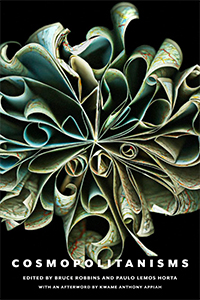


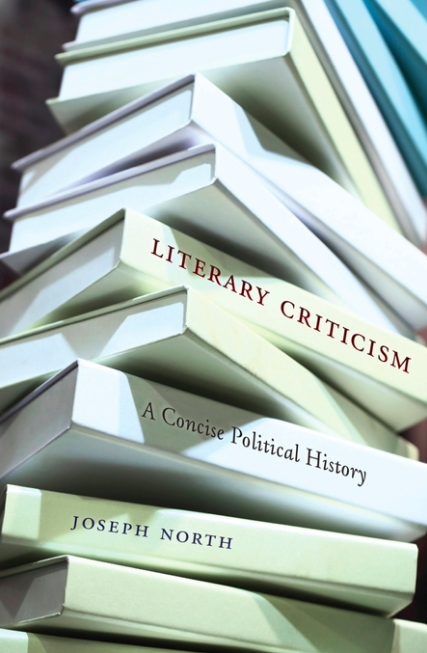

 by Kenneth Gross
by Kenneth Gross
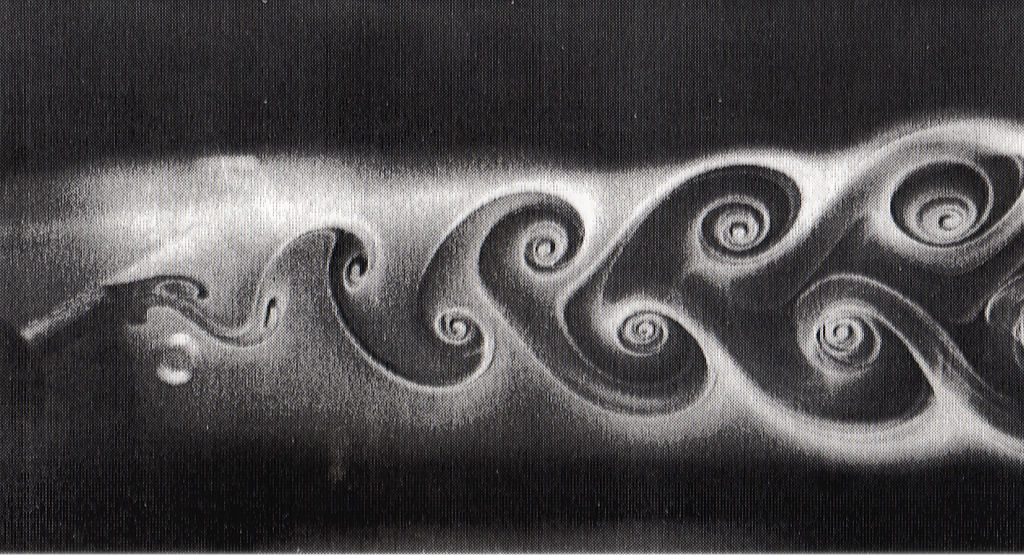
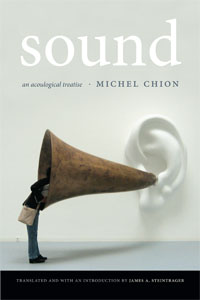 by Daniel Villegas Vélez
by Daniel Villegas Vélez
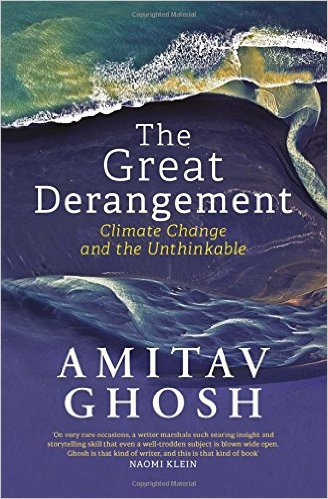 by Sadia Abbas
by Sadia Abbas
